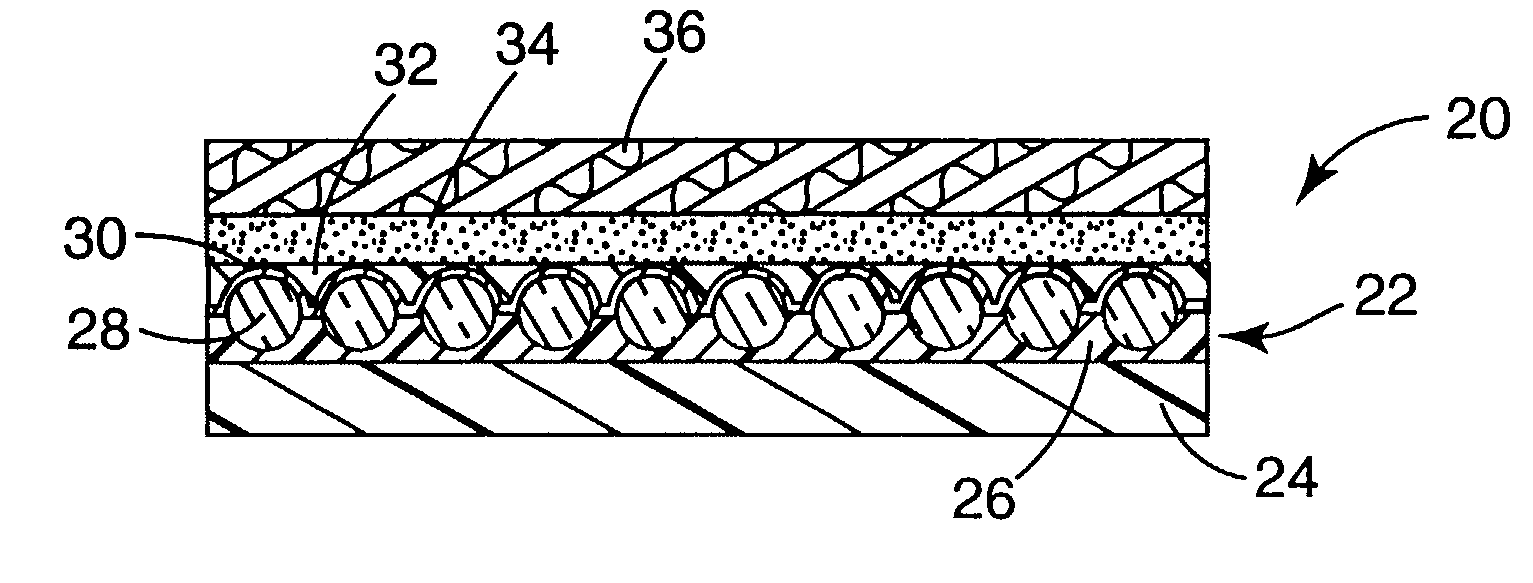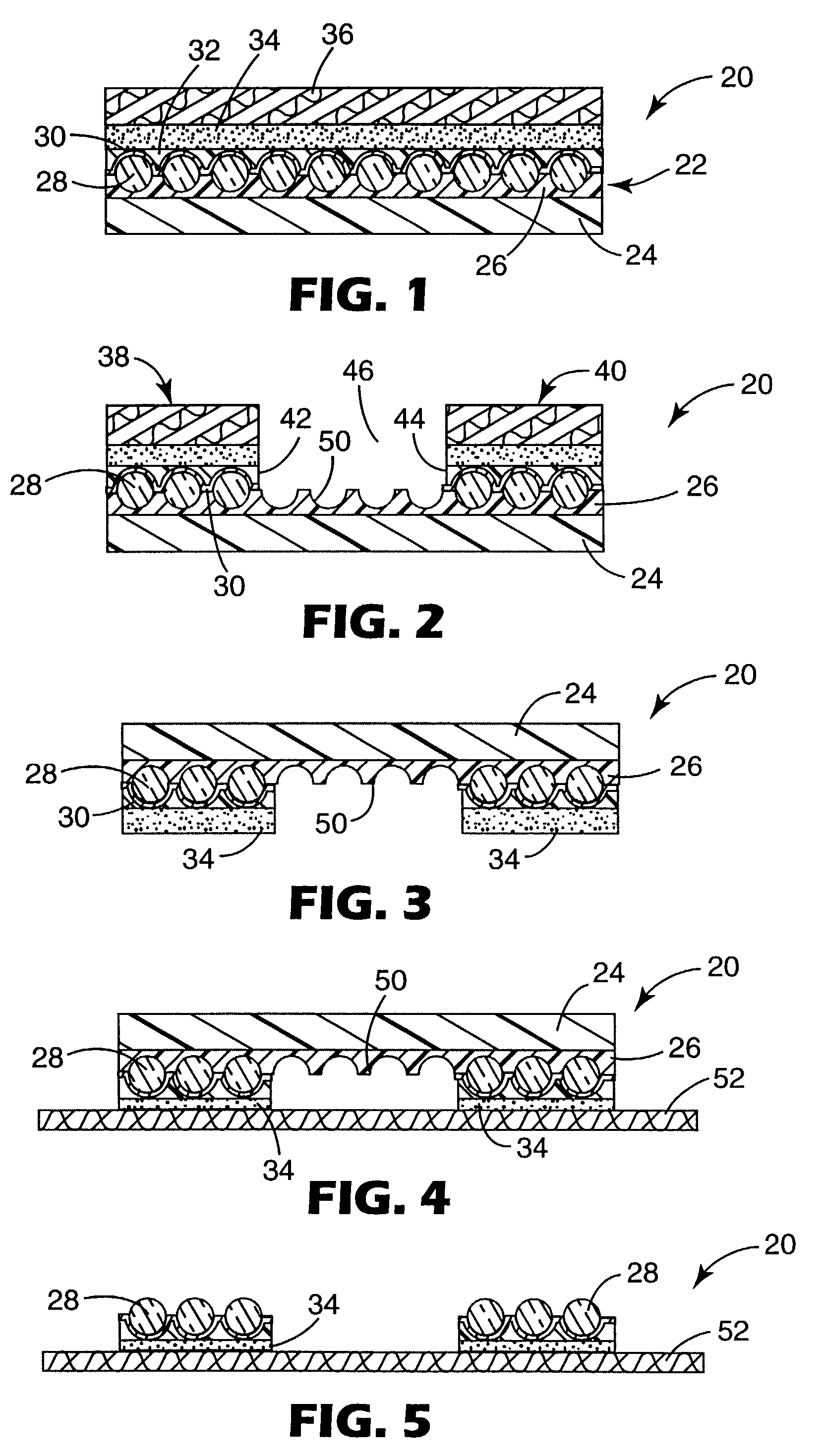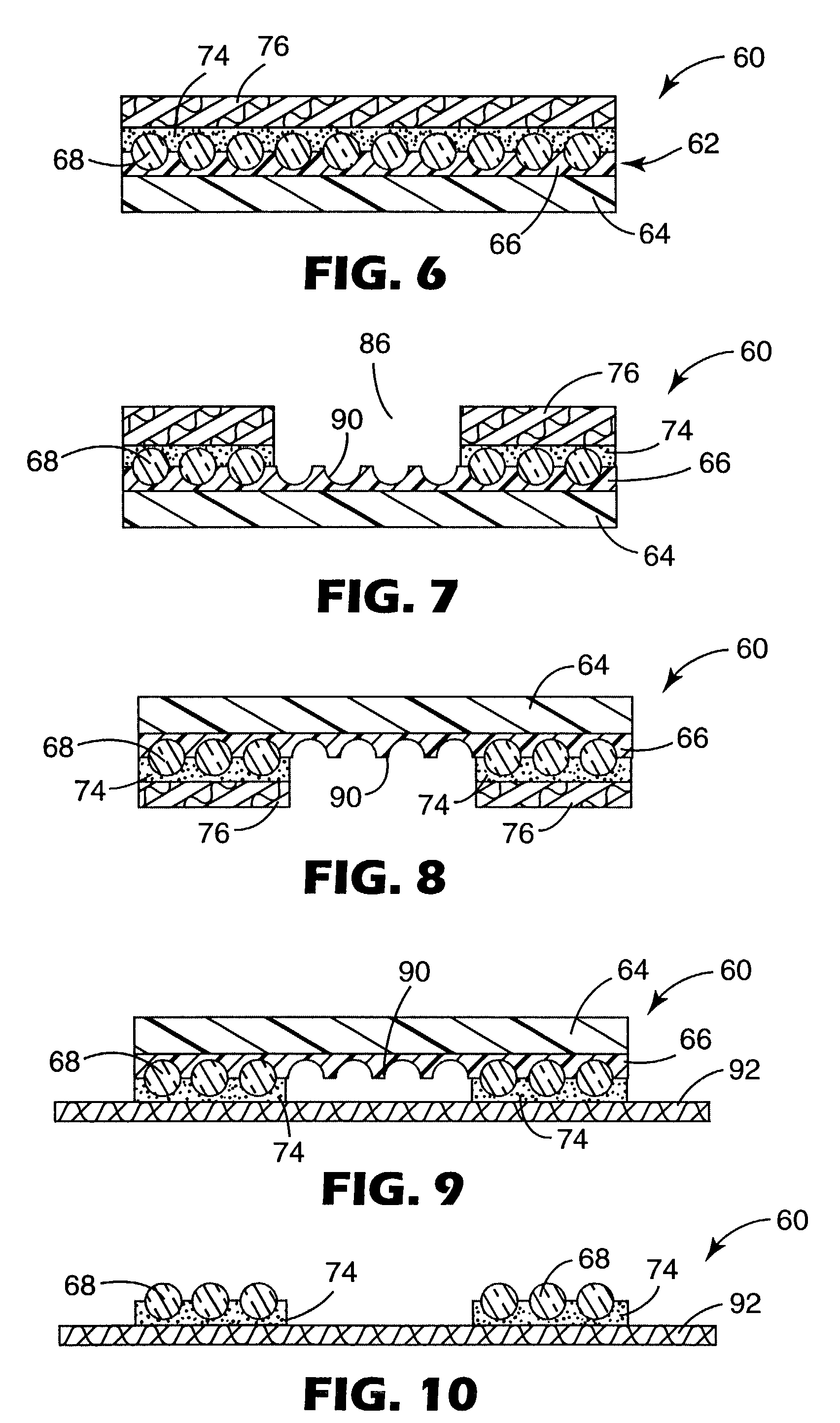Particulate transfer film with improved bead carrier
a transfer film and bead carrier technology, applied in the field of transfer films, can solve the problems of premature separation, and difficult handling during subsequent application steps, and achieve the effect of avoiding unintentional adhesion and/or transfer
- Summary
- Abstract
- Description
- Claims
- Application Information
AI Technical Summary
Benefits of technology
Problems solved by technology
Method used
Image
Examples
example 1
[0077] This example was intended to determine the approximate E-beam dosage needed to provide advantageous properties.
[0078] The temporary bead carrier was composed of polyethylene terephthalate (PET) film (95 .mu.m) coated with polyethylene (25 .mu.m). Beads having an average diameter of 60 .mu.m and a refractive index of 1.9 were applied to the temporary bead carrier, and an aluminum layer that was approximately 90 nm thick was subsequently applied. The film was then E-beamed, with the beam first passing through the beads rather than through the PET. A bead bond material (comprising nitrile butadiene rubber, phenolic resin, stearic acid, and plasticizer) was coated onto the aluminized beads and temporary carrier at a weight of about 34 grams / sq. meter. The bead-bond coated film was allowed to dry and cure, beginning at about 60.degree. C. and ramping to about 166.degree. C. over 6 minutes.
[0079] The adhesive was a polyester type thermoplastic polyurethane resin and was coated at a...
example 2
[0081] This example was intended to determine whether E-beaming should be done before or after application of the aluminum vapor coat onto the beads. FIG. 12 shows the difference between E-beaming after the reflectorizing coating has been applied to the beads versus after the glass beads have been coated on the temporary bead carrier but prior to the reflectorizing coating. The same methods and materials were used as in Example 1. E-beaming for this example was done at a dosage of 18 megarads (12 m / min., 175 kV and 108 mA). The results of this test indicate that under the test conditions it is beneficial to perform the E-beaming after the aluminum vapor coat has been applied to the beads.
[0082] Stripping forces of less than 118 g / cm are often acceptable by customers, while stripping forces greater than 118 g / cm start to generate problems and greater than 197 g / cm are often unacceptable. As compared to samples which haven't been E-beamed, the slight increase in stripping force when d...
example 3
[0083] This example demonstrates, as shown in FIG. 13, the impact of E-beaming on the adhesion level of exposed carrier coating lamination to the substrate. The same methods and materials were used as in Example 1. Samples were laminated to a 65% polyester, 35% cotton fabric using a heat press. The heat press was set at a pressure of 2.1 kg / cm.sup.2 and lamination time of 20 seconds. The temperature was then varied. As is shown, higher dosage levels of E-beam radiation reduce the force needed to remove the laminated exposed temporary bead carrier from the substrate. The stripping force is 1 to 2 orders of magnitude less for material that is E-beamed versus material that is not E-beamed. This stripping force is also quite consistent over a wide range of suitable lamination temperatures, which is a benefit obtained by the invention.
PUM
| Property | Measurement | Unit |
|---|---|---|
| Angle | aaaaa | aaaaa |
| Angle | aaaaa | aaaaa |
| Angle | aaaaa | aaaaa |
Abstract
Description
Claims
Application Information
 Login to View More
Login to View More - R&D
- Intellectual Property
- Life Sciences
- Materials
- Tech Scout
- Unparalleled Data Quality
- Higher Quality Content
- 60% Fewer Hallucinations
Browse by: Latest US Patents, China's latest patents, Technical Efficacy Thesaurus, Application Domain, Technology Topic, Popular Technical Reports.
© 2025 PatSnap. All rights reserved.Legal|Privacy policy|Modern Slavery Act Transparency Statement|Sitemap|About US| Contact US: help@patsnap.com



